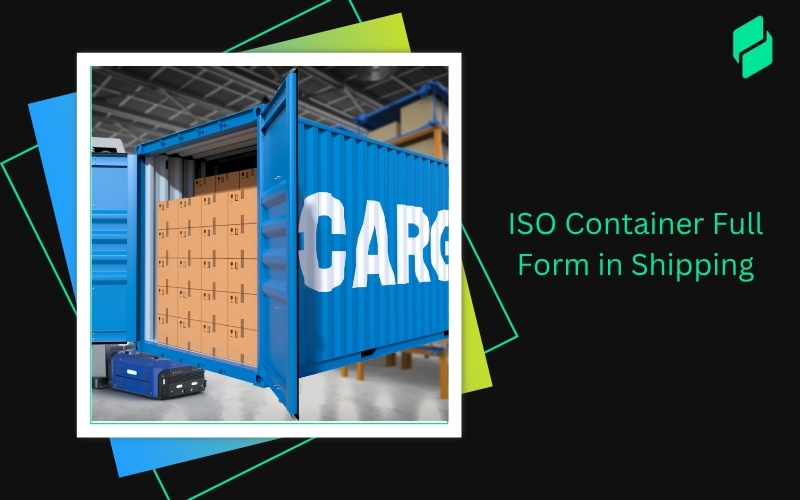Are you looking to understand what is FCL shipping and its significance in the import and export industry? Full Container Load (FCL) shipping is a cost-effective solution for transporting large quantities of goods across the globe.
It involves the exclusive use of a shipping container by a single consignee, ensuring the security and integrity of your cargo. Unlike its counterpart, Less than Container Load (LCL), FCL offers a direct, uninterrupted journey for your goods, minimizing the risk of damage and delays.
Stay tuned as we delve into the world of FCL shipping, unraveling its benefits and how it stands out from LCL shipping.
Optimize your business: use unlimited savings with Pazago fulfilled now!
Get Started ->What is FCL in shipping?
Full Container Load (FCL) shipping is a method used in global trade where a single shipper fills an entire shipping container with their goods. It's a popular choice for businesses with large quantities of products to transport, as it offers a secure and cost-effective way to move items internationally.
It allows for direct shipment, meaning the container goes from the origin to the destination without being opened or mixed with other shipments. This reduces the risk of damage or loss and makes the shipping process more efficient.
For companies involved in international trade, FCL is often more economical than other methods, like Less than Container Load (LCL), especially when shipping in bulk. It also provides a predictable schedule, helping businesses plan better.
Let's get into the nuts and bolts of it all – the containers themselves.
Container Sizes and Types in FCL Shipping

The most common container sizes are 20-foot and 40-foot containers. A standard 20-foot container is often called a Twenty-foot Equivalent Unit (TEU).
On the other hand, a 40-foot container, known as a Forty-foot Equivalent Unit (FEU), doubles the length while maintaining the same width and height.
These containers are the backbone of international trade, offering ample space for various goods.
This table provides the dimensions and capacities for different shipping container types.
But what does it cost to use these containers? Let's dive into the pricing next.
Understanding FCL Shipping Charges
Basis of FCL Shipping Charges
The charges are primarily based on the size and type of container used. Rates are typically quoted per container, with prices varying depending on whether you use a 20-foot or 40-foot container. The choice between these sizes depends on the volume of goods being shipped.
Factors Affecting FCL Pricing
Several factors can impact the pricing of FCL shipments:
- Distance: Longer shipping routes generally lead to higher costs.
- Volume and Weight: While FCL rates are usually fixed per container, extremely heavy cargo might incur additional charges.
- Type of Goods: Hazardous or temperature-sensitive items may require specialized containers, increasing costs.
- Port Fees: Charges for loading and unloading at the origin and destination ports can vary.
- Fuel Surcharges: Fluctuations in fuel prices can lead to adjustments in shipping rates.
- GRIs (General Rate Increases): Carriers can implement container price increases at the beginning and middle of each month, usually in response to demand.
- Peak Season Price Spikes: During peak season (typically August-November), businesses ship at higher volumes to prepare for the holiday shopping season, increasing prices.
- Holiday Delays: National holidays can cause shipping delays, affecting the overall cost through longer transit times or additional storage fees.
Additional Costs and Fees Associated with FCL
Apart from the basic freight charges, shippers should be aware of potential additional fees:
- Customs Clearance: Fees for customs brokerage and documentation.
- Insurance: Protecting the cargo against loss or damage during transit.
- Detention and Demurrage: Charges for exceeding the allotted container usage or storage time at the port.
- Inland Transportation: Costs for transporting the container to and from the ports.
Navigating through the charges can be complex. Pazago provides tools and insights to help exporters and importers optimize shipping costs and make informed decisions.
Wondering how to choose the best shipping option? Let's compare FCL and LCL.
FCL versus LCL: Making the Right Choice
Comparison of Volume Rate
Volume rate is critical when deciding between Full Container Load (FCL) and Less-than-Container Load (LCL) shipping.
FCL is generally more cost-effective for larger shipments filling an entire container, as you pay a flat rate for the whole container space.
In contrast, LCL charges are based on the volume or weight of your cargo, making it a more suitable option for smaller shipments.
Economies of Scale in FCL vs. LCL
Economies of scale play a significant role in the cost-effectiveness of this shipping. As the volume of your shipment increases, the cost per unit decreases, making FCL a more economical choice for bulk shipments.
On the other hand, LCL lacks this advantage, as costs are calculated based on the amount of space your cargo occupies in a shared container.
Criteria to Decide Between FCL and LCL
When choosing between FCL and LCL, consider the following criteria:
Utilize Pazago's comprehensive platform to make informed decisions between FCL and LCL, tailored to your specific trade needs.
All set for the big move? Here's how the shipping process unfolds.
The Shipping Process of FCL

1. Booking Shipment and Preparing Consignment
- Booking: Secure a shipment slot with a freight forwarder or carrier.
- Preparation: Pack goods securely and ensure all necessary documentation is ready for customs clearance.
2. Transportation to and from the Port
- To Port: Transport the consignment to the port of origin via truck or rail.
- Loading: Load the container onto the designated vessel at the port.
- From Port: At the destination, unload the container and transport it to the final destination.
3. Transit Phases and Delivery Procedures
- Loading and Sea Voyage: The container goes through loading, sea transit, and unloading phases.
- Bill of Lading: Obtain a bill of lading from the shipping line, serving as a receipt and contract.
- Customs Clearance: Complete customs clearance procedures at the destination port.
- Delivery: Once cleared, the goods are released for delivery to the consignee.
Curious about how to make this shipping more budget-friendly? Let's explore some strategies.
Strategies for Economic FCL Shipping
Choosing the Right Incoterms
International Commercial Terms (Incoterms) are crucial in these shipping contracts. Selecting the appropriate Incoterms, such as FOB (Free On Board) or CIF (Cost, Insurance, and Freight), can significantly impact the shipping cost and responsibilities between the buyer and seller.
Understanding and negotiating the right Incoterms can lead to more economical shipping arrangements.
Seasonal Pricing Considerations
Shipping rates for FCL can vary depending on the season. Awareness of peak seasons, when high demand and rates increase, can help plan shipments during off-peak times for better rates.
Additionally, staying informed about General Rate Increases (GRIs) and market trends can help anticipate and mitigate seasonal pricing fluctuations.
Tips for Getting the Best Pricing
- Early Booking: Secure your shipment well in advance to avoid last-minute surcharges.
- Compare Quotes: Obtain quotes from multiple carriers or freight forwarders to ensure competitive pricing.
- Negotiate Rates: Don't hesitate to negotiate rates, especially if you have a significant volume of shipments.
- Optimize Container Usage: Ensure you efficiently utilize the container space to avoid paying for unused capacity.
- Consider Consolidation: If you have flexibility, consider consolidating your shipment with other consignments to share costs.
Achieving the most economical shipping requires strategic planning and insight. With Pazago Fulfilled, businesses can access logistics and financial services tailored to their needs, ensuring cost-effective shipping solutions.
Now that we've ironed out the financials, let's weigh the pros and cons.
Benefits and Drawbacks of FCL Shipping
Advantages
- Time Efficiency: This shipping is generally faster than LCL (Less than Container Load) as it avoids the time-consuming process of consolidating and de-consolidating cargo.
- Reduced Handling: With FCL, the container is sealed at the origin and remains unopened until it reaches its destination, minimizing the risk of damage and loss due to less handling.
- Cost-Effectiveness for Larger Shipments: For shipments large enough to fill a container, FCL offers a more economical option compared to LCL, as the cost per unit decreases with increased volume.
Drawbacks
- Inventory Space Requirements: FCL requires sufficient inventory to fill a container, which might not be feasible for businesses with smaller shipment volumes or limited storage capacity.
- Cost Implications for Smaller Loads: For shipments that do not fill an entire container, FCL can be more expensive than LCL, as the shipper bears the cost of the unused space in the container.
Safety, Risks, and Insurance in FCL Shipping
Lower Overall Risks Compared to Other Shipping Methods
Due to the reduced cargo handling, FCL shipping is often considered safer than other shipping methods, such as Less than Container Load (LCL). With FCL, the container is sealed at the origin and remains unopened until it reaches its final destination, minimizing the risk of damage or loss.
Additionally, FCL shipments are less susceptible to delays caused by consolidation and de-consolidation processes, which can occur in LCL shipping.
Considerations for Cargo Safety and Insurance
- Cargo Safety: Properly packing and securing the cargo within the container is essential to ensure the safety of goods during FCL shipping. Utilizing appropriate packing materials and techniques can prevent movement and damage during transit.
- Insurance: Despite the lower risks, investing in comprehensive marine insurance coverage for FCL shipments is advisable. This insurance protects against potential losses or damages due to unforeseen events, such as accidents, natural disasters, or theft. It's essential to review the insurance policy's terms and coverage to ensure it meets the specific needs of your shipment.
With cargo safety and insurance complexities, having Pazago as your trade management partner ensures your shipments are well-managed and protected against unforeseen risks.
Conclusion
In conclusion, Full Container Load (FCL) shipping is vital to international trade, offering a secure and cost-effective solution for transporting large volumes of goods worldwide.
Understanding the critical aspects of FCL shipping, from container sizes and types to pricing strategies and safety considerations, is crucial for businesses engaged in import and export activities.
By leveraging FCL shipping's advantages, such as time efficiency, reduced handling, and lower overall risks, companies can optimize their logistics operations and achieve tremendous success in the global market.


.png)








